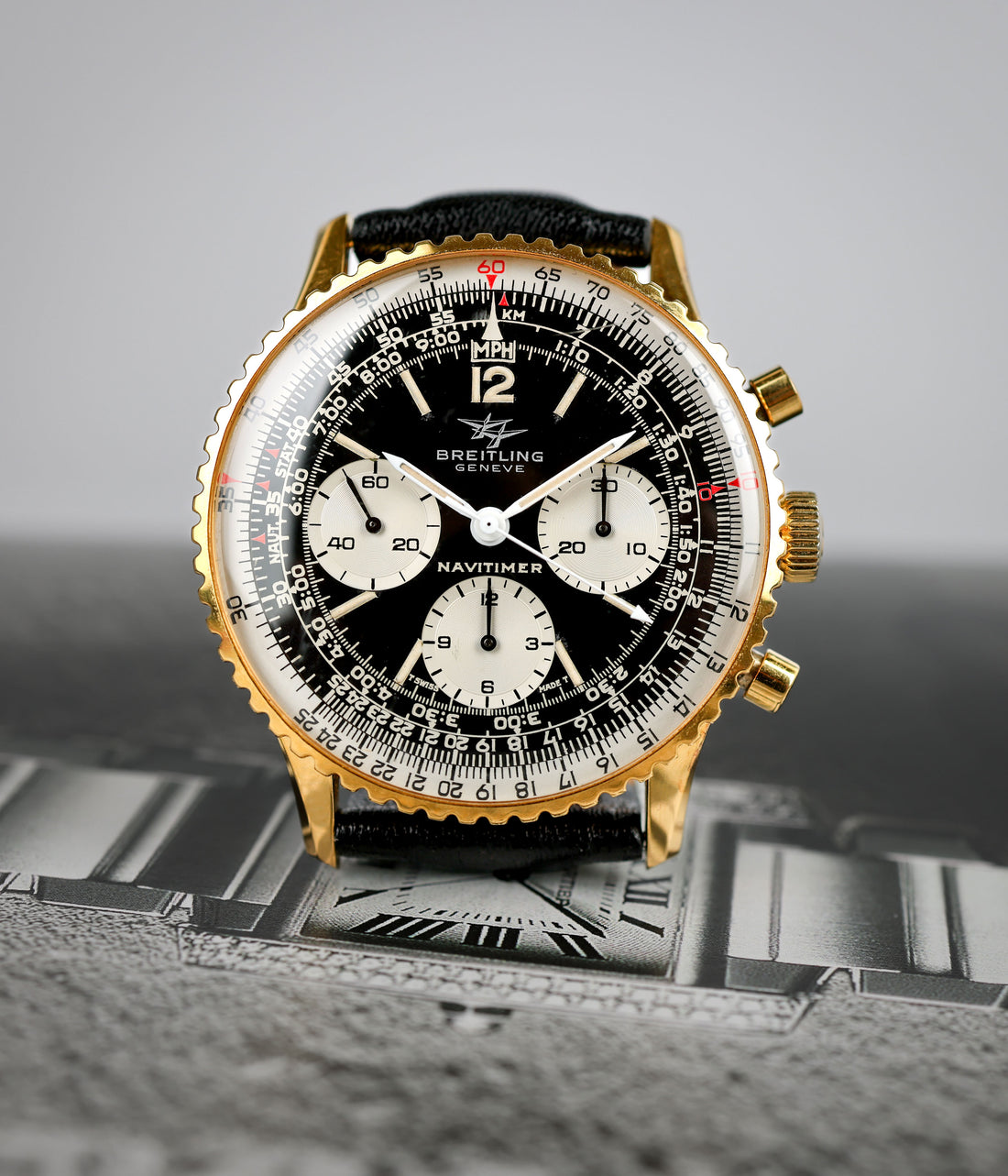
The first Breitling in space
Breitling: A must for vintage and pre-owned luxury watch collectors
In 1959, NASA selected its first group of astronauts from elite American fighter and test pilots. These first astronauts were known as the Mercury Seven. Among them was Scott Carpenter, a US Navy aviator and test pilot. During his lifetime, Carpenter's achievements in aviation and underwater exploration contributed significantly to both military technology and scientific research.
One of these achievements was the key role he played in the development of the Breitling Navitimer Cosmonaute, a watch specifically designed for astronauts. His input directly influenced its design and functionality. Before his Aurora 7 mission on May 24, 1962, Carpenter recognised the need for a 24-hour dial wristwatch. This was crucial because astronauts experience multiple sunrises and sunsets during orbital missions, making a standard 12-hour watch impractical for distinguishing AM from PM in space.
So he approached Breitling with a unique request—a Navitimer to assist with timekeeping in space.

Carpenter’s vision included three changes to the Navitimer. First, he requested a 24-hour dial instead of the traditional 12-hour format to help astronauts track time while orbiting Earth every 90 minutes. Breitling adapted their Navitimer design, incorporating a modified Venus 178 movement that rotated the hour hand at half speed to display a full 24-hour cycle. Second, he simplified the slide rule by removing scales unnecessary for space calculations, improving legibility. Third, he widened the bezel for ease of use with gloves. Breitling delivered a custom prototype, which Carpenter famously wore during NASA’s Mercury-Aurora 7 mission in 1962, securing its place as the first Swiss wristwatch worn by an American astronaut in space. Breitling commercialised Carpenter’s prototype design and the resulting timepiece, named the Cosmonaute, launched in 1961 as part of the Navitimer collection.
Breitling’s connection to (space) exploration didn’t start with Carpenter but began with Willy Breitling’s fascination with aviation and engineering. In the late 1950s, Breitling already had a reputation for innovation, introducing the Chronomat in 1942, the first chronograph with a slide rule for calculations. This was followed by the 1954 Navitimer, designed for pilots to perform air navigation tasks. The Navitimer merged a chronograph with a circular slide rule, making it a portable flight computer. The name “Navitimer” combined “navigation” and “timer,” emphasising its role in aeronautics. It quickly became the watch of choice for pilots and aviation organisations, including the Aircraft Owners and Pilots Association (AOPA), which adopted it as its official timepiece.
So, where is Carpenter’s original watch today?

Well, watch collectors thrive on celebrity watch spotting, especially when the iconic timepieces linked to celebrities or historical figures vanish from public view. Yoko Ono gave John Lennon a rare Patek Philippe 2499 before his death, but it’s only been spotted in two photos and only recently has been re-discovered. Similarly, Pablo Picasso was photographed wearing Jaeger-LeCoultre, Patek Philippe, and Rolex watches, none of which have resurfaced since his passing in 1973.
A comparable mystery surrounded the Scott Carpenter’s Breitling which he wore during the historic Mercury-Atlas 7 spaceflight on May 24, 1962. Carpenter was extensively photographed training with the watch and wearing it aboard the Aurora space capsule. Yet, the watch remained unseen since then—neither in museums, NASA archives, nor private collections—until it finally resurfaced.
Carpenter’s watch was unique among the Mercury Seven astronauts, as he was the only one to wear a chronograph. With its larger case, it stood out next to the smaller Accutron Astronaut and LeCoultre 24-hour watches worn by his fellow astronauts. Recently, Breitling unveiled the watch and confirmed its whereabouts over the decades. After Carpenter’s flight, the seawater-soaked Cosmonaute was returned to Breitling, where it passed through the hands of Willy Breitling, his wife, and eventually their son, Gregory Breitling. Preserved in its original condition, the watch was displayed publicly for the first time to mark the 60th anniversary of Carpenter’s mission a couple of years ago.
After splashdown, the watch sustained damage from seawater and stopped working an hour after Carpenter was rescued. Rather than repairing or replacing parts, Breitling preserved the watch as a historical artefact, leaving it unrestored. Carpenter later received a replacement Cosmonaute, which he regularly wore, but the original remained hidden in the Breitling family’s possession until its recent public debut.
To celebrate this rediscovery, Breitling released a limited-edition Navitimer B02 Chronograph 41 Cosmonaute. It features modern enhancements like a platinum bezel, sapphire crystal caseback, and a 70-hour power reserve while retaining the 24-hour dial and slide rule. The caseback pays tribute to Carpenter’s mission with engravings of the Mercury 7 capsule and “3 orbits around the earth.”
Scott Carpenter’s collaboration with Breitling produced not just a tool for astronauts but also the actual first Swiss wristwatch worn in space. After six decades, the story of this watch continues to inspire enthusiasts, serving as a reminder of ingenuity, exploration, and timeless design.
